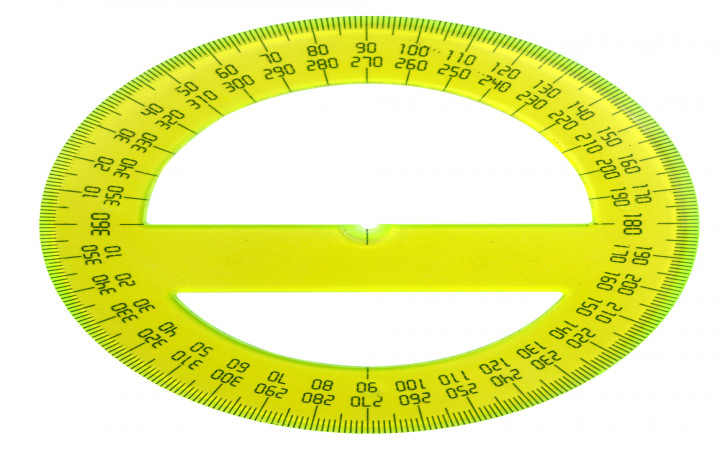Today’s Wonder of the Day was inspired by Anna Grace from WInterville. Anna Grace Wonders, “Why does a circle have infinite lines of symmetry?” Thanks for WONDERing with us, Anna Grace!
Do you like geometry? We do! We wanted to do a Wonder of the Day about a special shape, but couldn't decide which shape to feature. The more we thought about it, though, the more we kept circling back around to the same shape. What was it? The circle, of course!
What do you like best about circles? We like their perfectly round shapes. They don't have those pointy ends you'll find on squares and triangles.
Some of our favorite things are shaped like circles. For example, our favorite dessert — pie — is shaped like a circle. And so is our favorite toy: the hula hoop. What other circle-shaped things do you see or use every day?
Geometry teachers define a circle as the set of points on a plane that are all the exact same distance from a central point. This means that circles are flat. When you study circles, you learn that every circle has a radius, a diameter, a circumference, and an area.
A circle's radius is the distance from its center to its edge. A circle's diameter is the distance across the circle at its widest point. The diameter of a circle is always exactly twice its radius.
A circle's perimeter — the distance all the way around its edge — is called its circumference. To calculate the circumference of a circle, you need to know its radius.
The formula for the circumference of a circle is 2πr, where r is the radius of the circle and π is the value pi (approximately 3.141592). Since the diameter of a circle is twice the radius, you can also think of the formula for the circumference of a circle as πd, where d is the diameter of the circle.
The area of the circle is the measurement of the number of square units inside of a circle. Once again, you need to know the radius. The formula for the area of a circle is πr2. The 2 in the formula is an exponent, which means you multiply the radius by itself. So, the formula for the area of a circle could actually be written πrr instead.
One neat thing about circles that all geometry teachers know is that if you know one of these facts — either radius, diameter, circumference, or area — you can figure out all the other values! For example, if you know the radius of a circle, you can then figure out its diameter, circumference, and area.
One other interesting aspect of circles is that every circle can be divided into 360 units called degrees. So, if you turn around in a full circle, you turn 360 degrees. If you simply turn halfway around — a half-circle — you turn 180 degrees.
So why 360 degrees instead of something simpler, like 100 degrees? Mathematicians believe the ancient Babylonians are to blame. In about 2400 B.C., they noticed the circular motion of the Earth around the Sun. They also calculated that it took about 360 days for this circular orbit to be completed.
Therefore, they decided to divide the circular path into 360 degrees. That way they could easily track each day's passage on a circular calendar. So if you get confused in geometry by the number of degrees in a circle, blame the Babylonians!




